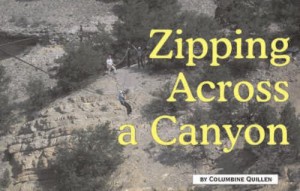Letter from Virginia McConnell Simmons
Place Names – September 2006 – Colorado Central Magazine
Editors:
The origins of Bayou Salado’s name have long been debated, and the appearance of a Bayou Salida in an advertisement only makes the issue slightly more confusing. Now I will add a few words to Ed’s take on Bayou Salado while some tenderfoot in an ad office somewhere is deciding exactly where we should put the X for Bayou Salida on our maps.
Let’s start with a paper entitled “Bayou Salade,” written by John J. Lipsey in 1947 for presentation to a group called the Pike’s Peak Ghost Town Club, of which he was a member for several years, as was I when I lived in Colorado Springs. Back in the good old days before Colorado suffered all manner of unfortunate change, this organization took field trips to many glorious places, including South Park, and members like Lipsey researched diligently to prepare papers about them. I was indebted to several of those members and their research when I wrote my book about Bayou Salado.
In the name, the first word, Bayou, can be understood by considering pronunciation. Start with the Spanish word valle, meaning valley. Spanish-speaking people pronounce initial consonants b and v similarly — or interchangeably it seems. (For instance, owners of the Baca Grant were said to be the descendants of Cabeza de Vaca.) Next, the vowel a and the double ll following it are pronounced like an i followed by y. Then if you slide over the final vowel, e or o, it sounds like uh, and the whole word sounds like by-yuh, not far from the word for marsh or creek, bayou. Lipsey, a Southerner, made this point in his paper.
A meaning for the second word, Salado, is salty in Spanish. Just about everyone around here is familiar with the famous salty spring in South Park that was a magnet for game and Native American hunters, trappers, and eventually a salt works. In fact, the salt spring was so well known that in 1844, when the first edition of Commerce of the Prairies was printed, Gregg’s map showed South Park as Valle Salado, which Lipsey noted in his paper. A few years earlier, however, Thomas Farnham had traveled through South Park in 1839, and he called the place Bayou Salade. Lipsey was disappointed that I used Salado rather than Salade in my book title, but either was suitable, I felt.
Some of this confusion might have been avoided if an English teacher had been around to tell the trappers and guides — whether Spaniards, Frenchmen, Creoles, American drifters, or whatever — to stand up straight, remove the chewing tobacco from their mouths, speak clearly, and learn to read and write. Instead, the frontier had a gaggle of malodorous frontiersmen who mumbled their words and put an X where a name should be on a map, so someone else wrote down whatever sounded approximately correct. The origins of South Park’s name probably came about that way.
Virginia McConnell Simmons
Del Norte


